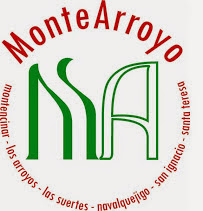Are you tired of reading endless news stories about ethical hacking and not really knowing what that means? Let's change that!
This Post is for the people that:
- Have No Experience With Cybersecurity (Ethical Hacking)
- Have Limited Experience.
- Those That Just Can't Get A Break
OK, let's dive into the post and suggest some ways that you can get ahead in Cybersecurity.
I receive many messages on how to become a hacker. "I'm a beginner in hacking, how should I start?" or "I want to be able to hack my friend's Facebook account" are some of the more frequent queries. Hacking is a skill. And you must remember that if you want to learn hacking solely for the fun of hacking into your friend's Facebook account or email, things will not work out for you. You should decide to learn hacking because of your fascination for technology and your desire to be an expert in computer systems. Its time to change the color of your hat 😀
I've had my good share of Hats. Black, white or sometimes a blackish shade of grey. The darker it gets, the more fun you have.
If you have no experience don't worry. We ALL had to start somewhere, and we ALL needed help to get where we are today. No one is an island and no one is born with all the necessary skills. Period.OK, so you have zero experience and limited skills…my advice in this instance is that you teach yourself some absolute fundamentals.
Let's get this party started.
- What is hacking?
Hacking is identifying weakness and vulnerabilities of some system and gaining access with it.
Hacker gets unauthorized access by targeting system while ethical hacker have an official permission in a lawful and legitimate manner to assess the security posture of a target system(s)There's some types of hackers, a bit of "terminology".
White hat — ethical hacker.
Black hat — classical hacker, get unauthorized access.
Grey hat — person who gets unauthorized access but reveals the weaknesses to the company.
Script kiddie — person with no technical skills just used pre-made tools.
Hacktivist — person who hacks for some idea and leaves some messages. For example strike against copyright.
- Skills required to become ethical hacker.
- Curosity anf exploration
- Operating System
- Fundamentals of Networking
More info
- Hak5 Tools
- Underground Hacker Sites
- Hack Website Online Tool
- Nsa Hack Tools Download
- Hacker Tools List
- Pentest Tools Windows
- Hacking Tools Kit
- Hacking Tools Windows
- Hacking Tools For Kali Linux
- Nsa Hacker Tools
- Hack Tools
- Hack Tools 2019
- Hack Tools
- Ethical Hacker Tools
- Pentest Tools Download
- Hacker Tools Apk Download
- Hacker Tools
- Pentest Tools Find Subdomains
- Hack Tool Apk
- Pentest Tools For Ubuntu
- Pentest Automation Tools
- Tools Used For Hacking
- Hack Website Online Tool
- Black Hat Hacker Tools
- Pentest Tools For Mac
- Computer Hacker
- Hacking Tools For Beginners
- Blackhat Hacker Tools
- Pentest Tools Bluekeep
- What Are Hacking Tools
- Pentest Reporting Tools
- Hak5 Tools
- Hack Tools
- Hacker Tools Hardware
- Hack Tools Download
- Hack And Tools
- How To Install Pentest Tools In Ubuntu
- Hacker Hardware Tools
- Pentest Tools Apk
- Hacking Tools For Beginners
- Hacking Tools Download
- Hacking Tools For Kali Linux
- Hacker Hardware Tools
- Hack Tools Online
- Pentest Tools For Ubuntu
- Wifi Hacker Tools For Windows
- Hacking Tools Windows 10
- Hacking App
- Tools Used For Hacking
- Hackrf Tools
- Pentest Tools Website
- Hack Tools Online
- Hacker Tools Software
- Pentest Tools Review
- Hacking Tools For Kali Linux
- Black Hat Hacker Tools
- Pentest Tools Open Source
- Hacker Tools Linux
- Pentest Tools Online
- Pentest Tools Subdomain
- Hacking Tools
- Hacking Tools 2019
- Hacker Tools Software
- New Hacker Tools
- Pentest Tools
- Easy Hack Tools
- Install Pentest Tools Ubuntu
- New Hacker Tools
- Blackhat Hacker Tools
- Hacking Tools For Pc
- Hack Tools Pc
- Hacking Tools For Mac
- Black Hat Hacker Tools
- Tools For Hacker
- Android Hack Tools Github
- Pentest Tools Find Subdomains
- Pentest Tools
- Hacking Tools For Beginners
- Hack Website Online Tool
- Pentest Automation Tools
- Hacker Tools Free Download
- Hacking Tools Mac
- Hacker Tool Kit
- Beginner Hacker Tools
- Hack Tools 2019
- Hacking Tools For Kali Linux
- How To Hack
- Hack Tools Mac
- Hacker Tools Software
- Hacker Tools For Pc
- Pentest Tools Windows
- Hacking Tools Mac
- Github Hacking Tools
- Hacking Tools Free Download
- Hacking Tools
- Hacking Tools For Pc
- Pentest Tools Framework
- Pentest Tools For Windows
- How To Make Hacking Tools
- Usb Pentest Tools
- Best Hacking Tools 2020
- Pentest Tools For Mac
- Hacking Tools Pc
- Pentest Tools Open Source
- Beginner Hacker Tools
- Hacking Tools Usb
- Hacking Tools
- Pentest Recon Tools
- Hacker
- Hackers Toolbox
- Hacking Tools For Games
- Pentest Tools Linux
- Hack Tools 2019
- What Are Hacking Tools
- Hacking Tools Github
- Tools For Hacker
- Pentest Tools Windows
- Hacking Tools For Mac





















